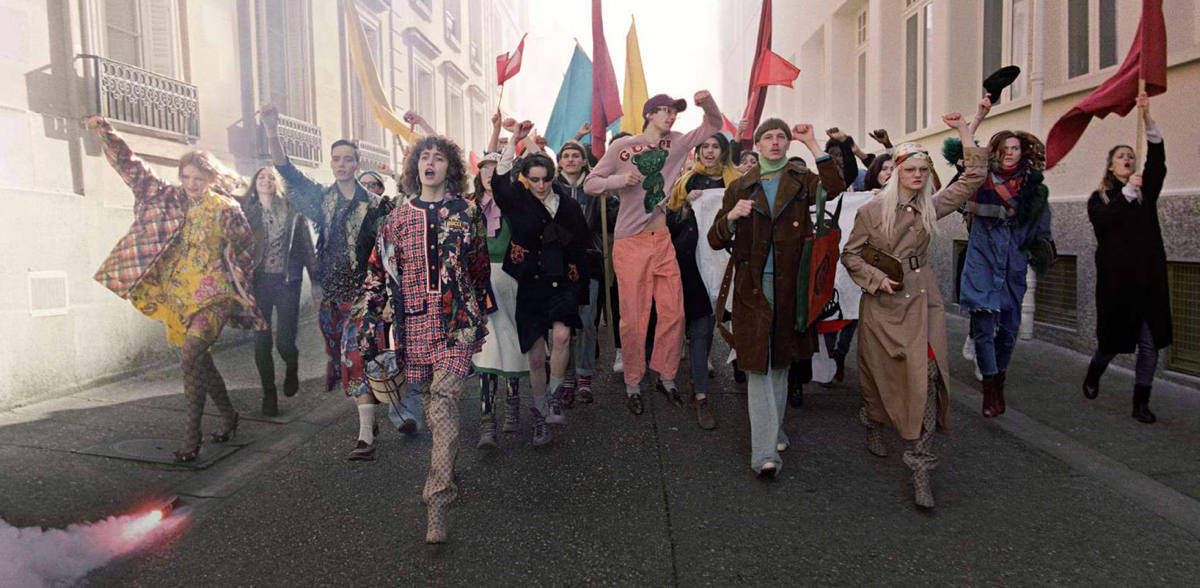Gucci strives to create a culture of balance in fashion. That's why the company has decided to be part of the fashion revolution with ideas of positive change to secure the collective future.
With its strategy Gucci Equilibrium, the luxury company says it will keep its employees informed about how they are letting planet Earth set the limits and how they are applying innovation and cutting-edge science to find new ways to manage their impact on the environment. Gucci Equilibrium will also explain the actions the brand is taking to help the companies it engages with to make them more sustainable.

For a Sustainable Fashion Future
Gucci now has recycling programmes in 200 shops and is working on implementing LED lighting in all its outlets. The company also monitors Co2 emissions to set realistic emissions reduction targets. Gucci is steadily increasing the number of hybrid vehicles in its fleet, from 19 in 2015 to 52 in 2017. The company plans to continue this shift.
Gucci has set an ambitious target to reduce its EP&L footprint by 40% relative to business growth since 2015. In terms of environmental reporting, Gucci reduced paper consumption by 63%, water consumption by 33% and energy consumption per employee by 18% in 2017 compared to 2016 across all its offices. As for materials. Gucci’s organic fabrics are GOTS as well as OCS (Organic Content Standard) certified
As a first for luxury brands, Gucci achieved Leadership in Energy and Environmental Design (LEED) certification in 2009. By providing a framework for creating healthy, highly efficient and cost-effective green buildings, LEED is recognised as the world's leading green certification for building and sustainability excellence.
In addition to these achievements, all its shops in Italy have been SA8000® certified since 2007 and ISO45001 certified for occupational health and safety in 2019.

How Gucci Reduces its Footprint Across the Supply Chain
Gucci works closely with its suppliers to ensure traceable and sustainable sourcing at every step of the chain. These initiatives have resulted in significant reductions. Gucci's 2019 environmental profit and loss analysis show that the company is on track to achieve its 2025 sustainability goal of a 50% reduction in greenhouse gas emissions.
Since 2015, Gucci has achieved a 39% reduction in its footprint across the supply chain, relative to growth. It takes the remaining emissions across the supply chain and offsets them with nature-based solutions that protect important forests and biodiversity around the world. By doing this, Gucci has achieved full carbon neutrality as of 2018.
Nature-based solutions account for around 30% of the climate solution. It’s crucial that the business community recognises this and incorporates them as part of their climate strategies. Forests, for example, remove carbon dioxide from the atmosphere, which helps mitigate climate change. Unless they are protected, they'll continue to decline.
Gucci works hard to offset its remaining emissions each year through UN REDD+ projects, which help mitigate climate change, protect biodiversity and provide economic and social benefits to local communities. Companies can implement this direct solution to hold themselves accountable for all their emissions.